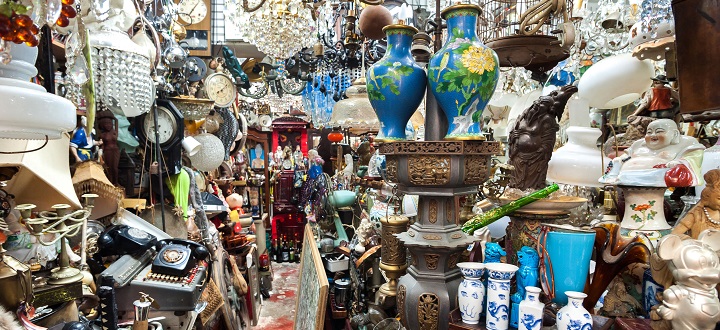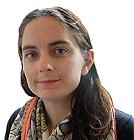Holding on to the past: Why decluttering is such a dilemma
-
Research
- Culture and Communication
- Creativity
Posted on 25 April 2016
In a consumer age, how do we decide which objects to keep for future generations? What's a family heirloom and what's a national treasure? Our researchers sift through the evidence

Mass production and consumption have created an explosion of consumer goods”
Spring is in the air. It’s the time of year when thoughts turn to cleaning and de-cluttering. But in a consumer age, how do we decide what to keep and what to consign to the skip?
And on a national scale, how do museums cope with ever-growing collections of amazing artefacts, many of which never see the light of day? Which objects define our heritage – and which are best forgotten?
These questions lie at the heart of the 'Profusion' study conducted by Professor Sharon Macdonald and Dr Jennie Morgan in our Department of Sociology.
“As an anthropologist,” explains Dr Morgan, “you want to understand actual practices and everyday life, so it’s about looking at moments when museums and householders are self-consciously reflecting on what they want to keep for the future or not.
“So we’ve spent quite a bit of time identifying those moments. In homes, for example, there are big events such as moving house or inheriting things, as well as more mundane but significant events like spring-cleaning and trips to the tip.”
The scale of the task
The key question addressed by the study is about the increasing scale of the decluttering task.
“Mass production and consumption have created an explosion of consumer goods,” says Professor Macdonald. “We are interested in what we call curating profusion because one big challenge is knowing what to save when there is such a profusion of things to choose from.
“We’re also interested in how this issue is tackled beyond the household level. Our research also encompasses museums where it is the job of curators to address the broader question of what to collect, what to keep and what to discard. The choices they make will determine what’s going to be around in years to come, defining our cultural history.”
The themes are connected by the idea that our heritage is defined by what we do now to prepare for the future – in terms of managing the landscape, for example, or preserving flora and fauna. Other researchers are looking at the question of what information about our planet’s culture should be preserved in time capsules.
Profusion
Work on the four-year Profusion theme began in 2015 and so far the researchers have interviewed museum staff, talked to professional declutterers, and surveyed the professional guidelines that define best practice for museum collections.
Dr Morgan remembers one interview especially well. “I talked to a prolific private collector of old advertising and road signs, toy trains, books, and glassware – all on display in his office and home. To ensure that these collectibles looked ‘happy’ - as he put it – he had redecorated using furnishings and paint schemes from the 1920s and 1930s. He had even ripped out a new fitted kitchen to replace it with old units, a stove, a Belfast sink and reconnected a bell system. He conceded that, while it would be difficult, he might one day have to let go of some things.”
In March 2016, Professor Macdonald and Dr Morgan held the first of a series of workshops themed around household or domestic profusion.
“We asked all participants to bring an object that was personally meaningful to them and we arranged for a professional declutterer, to guide us through a series of activities. The idea was to get everyone thinking about what objects mean to us, the attachments we have, why those attachments might make it difficult to let go of certain types of things, and approaches to the decluttering process.”
The participants were encouraged to approach decluttering like going on a holiday: knowing the destination in advance helps you to decide what - and what not - to pack.
“Really the goal was to think about how the process of decluttering in the home might transfer or not to the museum context,” says Dr Morgan.
Clutter in the digital age
Professor Macdonald and Dr Morgan will also explore the impact of the digital age. Is it a help or a hindrance when it comes to the management of profusion?
The aim is that their research will influence official guidelines governing the way in which museums deal with the challenges of profusion – in terms of what to collect, how to provide access to collections and how to go about discarding objects.
“We would hope that the insights we generate will influence policy-makers’ perceptions,” says Dr Morgan. “We think that by looking across these domains – the home and the museum – we can bring a novel perspective to the issue, and have an effect on the practical guidance for museum staff.”
The Profusion study is one of four themes tackled by a wider international project called Heritage Futures funded through the Arts & Humanities Research Council (UK)
The text of this article is licensed under a Creative Commons Licence. You're free to republish it, as long as you link back to this page and credit us.

Sharon Macdonald
Research interests in museums, cultural heritage, social memory and social anthropology

Jennie Morgan
Research interests in new museological and critical heritage studies, materiality and material culture
Discover the details
Find out more about the Profusion study, part of the AHRC-funded Heritage Futures project
Read a blog post by Dr Jennie Morgan Forgetting about, letting go, and disposing of ‘stuff’: connections between the Unloved Collections and Curating Profusion projects ,
Explore more research

A research project needed to spot trees on historic ordnance survey maps, so colleagues in computer science found a solution.

We’re using gaming technology to ensure prospective teachers are fully prepared for their careers.

A low cost, high-accuracy device, could play a large part in the NHS's 'virtual wards'.
